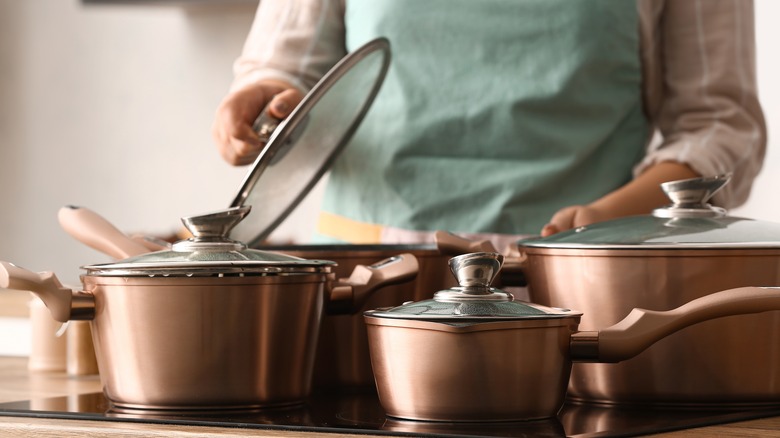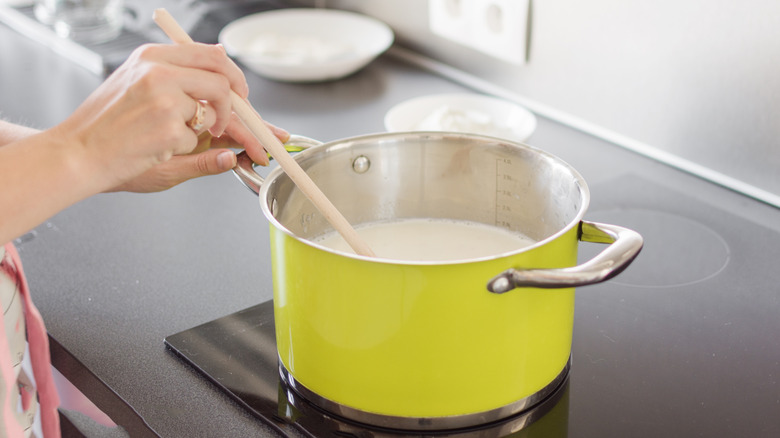Why The Interior Color Of Your Saucepan Matters
You know the old saying, "It's what's on the inside that counts?" Kind of corny, right? Cue the eye roll. But, when it comes to the kitchen, there might be something to the phrase, after all.
One of the first steps to culinary greatness (or even okay-ness) is choosing the right tool for the job. There's a reason why bartenders stir cocktails with bar spoons instead of soup spoons, and a grillmaster probably wouldn't cook a steak in an Easy-Bake Oven. The same is true of saucepans — choosing the right one makes a difference.
Anthony Bourdain stressed the importance of a quality saucepan in his opus "Kitchen Confidential." "Let me stress that again: heavyweight," Bourdain writes. "A thin-bottomed saucepan is useless for anything. I don't care if it's bonded with copper... or fashioned from the same material they built the stealth bomber out of. If you like scorched sauces, carbonized chicken, pasta that sticks to the bottom of the pot, burnt breadcrumbs, then be my guest."
While weight can undoubtedly separate a good saucepan from scrap metal, another (perhaps surprising) characteristic matters, too: color. Here's why the interior color of your saucepan matters.
Light colors let you monitor food as it cooks
Believe it or not, opting for light-colored bakeware can make all the difference. When pioneer YouTuber Charlie McDonnell (aka @charlieissocoollike) released mugs for his personal tea brand QualiTEA, McDonnell said he intentionally made the interior color of the mugs white even though he'd be losing out on some profit for that choice. The reason why? "When you make tea," McDonnell explained, "Because I know when you make tea, it's easier to tell the strength of tea when the inside is white."
In the same way, dark-colored saucepans can make it tougher to accurately gauge browning. This is even more important, says America's Test Kitchen, when you're cooking something like browned butter, which goes perfectly brown to burnt very quickly and easily. For more control and optimal results, it recommends choosing a saucepan with a light-colored, non-stick, stainless steel interior. The interior color of your saucepan also influences how your food is cooked. Darkly-colored pans absorb and radiate heat more quickly than lighter pans, which provide a lighter, less intense heat, per The Kitchn.
While both options have their place in the kitchen, it's important to choose the right tool for the job — and, when it comes to browning, much of knowing when you've reached that elusive sweet spot comes from visual observation. So, next time you're making a dish in need of a delicate touch, consider reaching for a saucepan with a light-colored interior. Your Bechamel sauce will thank you.

